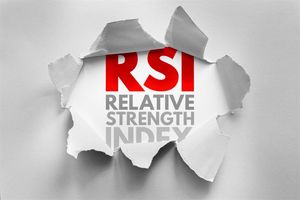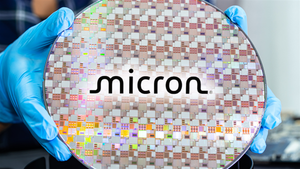
Wellness company Medifast (NYSE: MED) reported revenue ahead of Wall Street’s expectations in Q2 CY2025, but sales fell by 37.4% year on year to $105.6 million. On the other hand, next quarter’s revenue guidance of $80 million was less impressive, coming in 14.7% below analysts’ estimates. Its GAAP profit of $0.22 per share was significantly above analysts’ consensus estimates.
Is now the time to buy MED? Find out in our full research report (it’s free).
Medifast (MED) Q2 CY2025 Highlights:
- Revenue: $105.6 million vs analyst estimates of $101.8 million (37.4% year-on-year decline, 3.7% beat)
- EPS (GAAP): $0.22 vs analyst estimates of -$0.19 (significant beat)
- Adjusted EBITDA: $2.51 million vs analyst estimates of $500,000 (2.4% margin, significant beat)
- Revenue Guidance for Q3 CY2025 is $80 million at the midpoint, below analyst estimates of $93.8 million
- EPS (GAAP) guidance for Q3 CY2025 is -$0.30 at the midpoint
- Operating Margin: -1%, up from -4.7% in the same quarter last year
- Market Capitalization: $135.4 million
StockStory’s Take
Medifast’s second quarter results featured a sharp decline in revenue year over year, consistent with the ongoing contraction in its coach network. Management attributed the weak top-line performance primarily to a continued drop in active OPTAVIA coaches and lower client acquisition, due in part to reduced promotional activity. CEO Dan Chard acknowledged the challenging environment and emphasized the company’s focus on “transforming the business” to adapt to changes in the weight management landscape. Notably, Medifast reported that average revenue per coach increased sequentially, reflecting some stabilization in core operations despite the overall decline.
Looking ahead, management’s guidance reflects caution, citing persistent headwinds in acquiring and retaining coaches as well as ongoing shifts related to GLP-1 weight loss medications. Chard stated that Medifast is “in the midst of a comprehensive evolution” to address metabolic health more broadly and highlighted the rollout of the Premier+ pricing structure and EDGE coach program. The company believes these initiatives will simplify offerings and improve coach economics, but also noted that margin benefits are likely to be offset by other incremental actions. CFO Jim Maloney added that promotional activity will remain limited, and any impact from the new pricing model is not expected to meaningfully change margins in the near term.
Key Insights from Management’s Remarks
Management pointed to the evolving weight loss market, especially the influence of GLP-1 medications, as the backdrop for recent performance and strategic changes.
-
Coach network contraction: The number of active earning OPTAVIA coaches fell 33% year over year, with management citing ongoing challenges in coach recruitment and retention. This reduction directly impacted sales volume and overall company revenue.
-
GLP-1 medication integration: Medifast has adapted its approach as GLP-1 drugs become more prevalent in weight management. Approximately 60% of coaches now support clients using GLP-1s, and between 23% and 25% of coaches have personal experience with these medications. Management views this as a critical market shift and is tailoring offerings to address it.
-
Product portfolio evolution: The company expanded its core product lineup with the ACTIVE and ASCEND lines, designed to support clients using GLP-1 medications and those focusing on muscle maintenance. CEO Dan Chard highlighted clinical research supporting the OPTAVIA 5 & 1 plan’s effectiveness in preserving lean mass.
-
Pricing model overhaul: The Premier+ auto ship program, launched in July, replaces complex loyalty credits with upfront discounts and simplified shipping, aiming to make the value proposition clearer for clients and more predictable for coaches. This change is intended to reduce reliance on promotions and foster longer client retention.
-
Operational cost management: SG&A expenses declined significantly due to lower coach compensation and the elimination of non-recurring costs from last year, such as supply chain optimization and convention cancellations. These actions partially offset revenue declines and helped improve operating margin from a year earlier.
Drivers of Future Performance
Medifast expects ongoing weakness due to persistent coach attrition and a challenging competitive environment shaped by new weight loss medications.
-
Coach acquisition and productivity: Management identified reigniting coach growth as a top priority, but acknowledges that continued declines in coach numbers remain a risk to both revenue and profitability. Efforts to simplify onboarding and incentivize success via the EDGE program are underway, but near-term benefits are uncertain.
-
GLP-1 market adaptation: As the usage of GLP-1 medications grows, Medifast is repositioning its programs to address metabolic health for both users and non-users of these drugs. The company sees opportunity in supporting clients transitioning off GLP-1s, but recognizes this market is still evolving and competitive.
-
Limited promotional activity: The company intends to limit promotions in favor of the new Premier+ pricing structure, which may stabilize client retention but could also constrain new client acquisition if the simplified offer is less compelling than previous incentives. Management is balancing these changes with the goal of margin preservation, but expects only modest improvement.
Catalysts in Upcoming Quarters
Looking ahead, the StockStory team will be monitoring (1) whether the Premier+ pricing and EDGE coach initiatives can slow the decline in coach numbers, (2) how well new product lines like ASCEND and ACTIVE perform with clients using or transitioning off GLP-1 medications, and (3) signs that client retention and acquisition can stabilize without heavy promotional activity. Continued adaptation to the evolving weight management landscape will also be a key focus.
Medifast currently trades at $13.19, down from $13.46 just before the earnings. In the wake of this quarter, is it a buy or sell? The answer lies in our full research report (it’s free).
Now Could Be The Perfect Time To Invest In These Stocks
Trump’s April 2025 tariff bombshell triggered a massive market selloff, but stocks have since staged an impressive recovery, leaving those who panic sold on the sidelines.
Take advantage of the rebound by checking out our Top 6 Stocks for this week. This is a curated list of our High Quality stocks that have generated a market-beating return of 183% over the last five years (as of March 31st 2025).
Stocks that made our list in 2020 include now familiar names such as Nvidia (+1,545% between March 2020 and March 2025) as well as under-the-radar businesses like the once-small-cap company Exlservice (+354% five-year return). Find your next big winner with StockStory today.
StockStory is growing and hiring equity analyst and marketing roles. Are you a 0 to 1 builder passionate about the markets and AI? See the open roles here.





